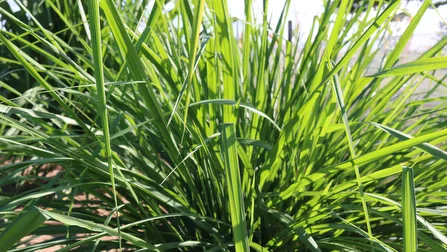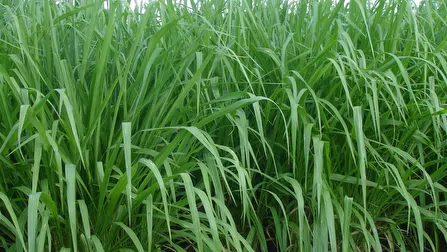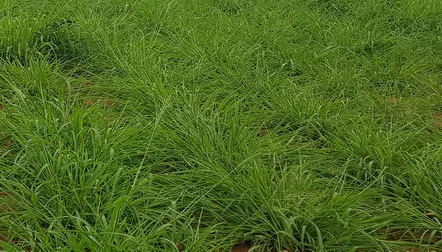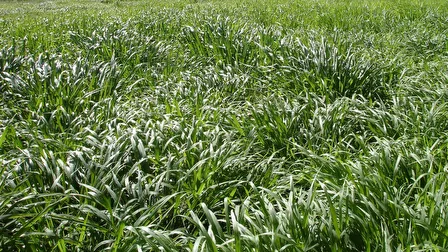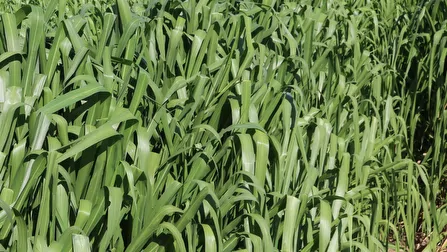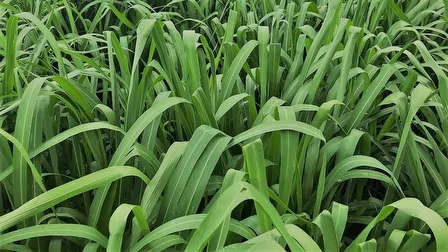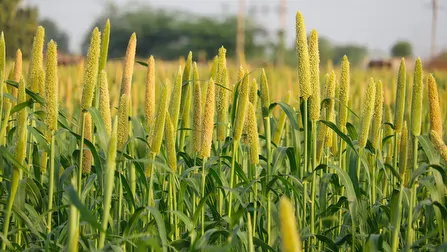
Indicação
Forrageira de clima tropical indicada para solos de média a alta fertilidade. Pode ser utilizada na rotação de culturas (adubo verde e planta de cobertura) e na alimentação animal, por pastejo direto, silagem ou feno. É indicada para bovinos de cria, recria e engorda, produção leiteira e também para equinos.
Pennisetum glaucum
Média a alta fertilidade
Pastoreio, fenação, adubação verde e planta de cobertura
8 a 10 t/ha de matéria seca (M.S.)
15%
1,50m a 2,50m
51 a 55%
Alta
Tolerante
Baixa
Anual
Utilização e Manejo
O Milheto é um forrageira de ciclo anual de clima tropical, indicada para solos de média a alta fertilidade. Pode ser utilizada na rotação de culturas (adubo verde e planta de cobertura) e na alimentação bovinos de cria, recria e engorda, produção leiteira e também para equinos na forma de pastejo direto, silagem ou feno. Pode ser estabelecida consorciada com pastagens que apresentam uma formação mais tardia, como a Humidicola e Dictyoneura. Nesse casos, é comum a semeadura de 3 a 4 kg/ha de sementes do milheto. No plantio individualizado, a recomendação é de 15 a 20 kg/ha de sementes. A produção de forragem pode chegar a 8 a 10 t/ha de matéria seca, ou 40 a 50 t/ha de matéria verde. A entrada de manejo dos animais deve ser em torno de 50 cm de altura, e a saída à 20 cm.
Origem
A planta de milheto Pennisetum glaucum surgiu entre 4 mil e 5 mil anos atrás ao sul do Deserto do Saara, de onde foi levada para a Índia a partir do ano 2000 a.C., tendo gerado genótipos distintos dos originais africanos. Atualmente, é uma das culturas mais cultivadas nos países da África saheliana e sudaniana. Embrapa CNPTIA (Abr/2016).
Características Morfológicas
É uma gramínea anual de verão, cespitosa, de crescimento ereto e que apresenta excelente produção de perfilhos e vigorosa rebrota, após corte ou pastejo. A estatura do colmo é capaz de superar 3 m, podendo atingir 1,5 m entre 50 e 55 dias após a emergência. Apresenta folhas com lâminas paralelinérveas e inflorescência na forma de panícula longa e contraída. As exigências térmicas e hídricas ideais para a planta de milheto são de temperaturas noturnas médias (15-28 °C) e mínimo de 30 mm de água para germinação. Embrapa CNPTIA (Abr/2016).
Características Agronômicas
Utilizado nas áreas de agricultura como adubo verde e cobertura de solo. Na pecuária, como forrageira para bovinos e equinos principalmente nas áreas de Cerrado. Boa resistência a seca.
